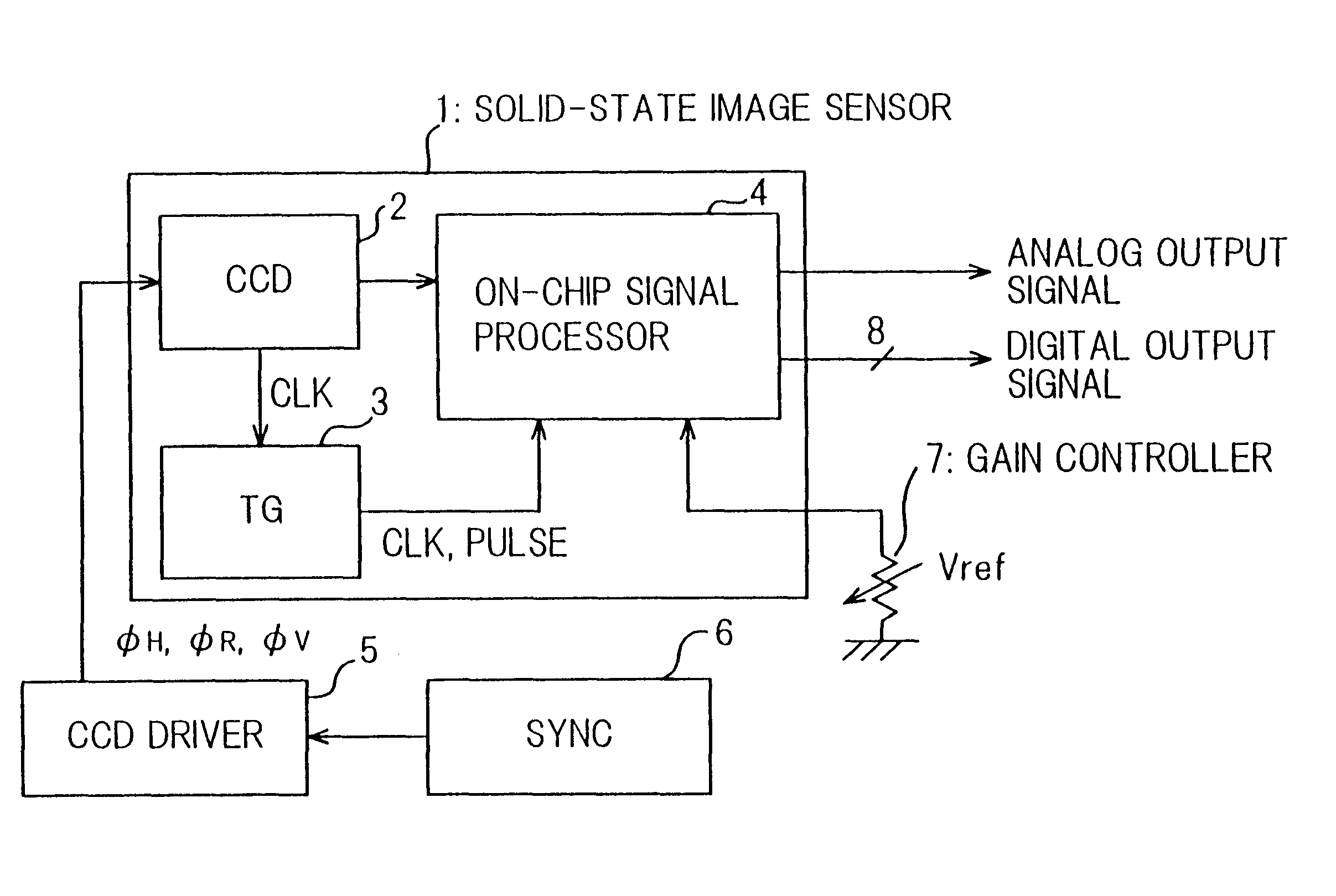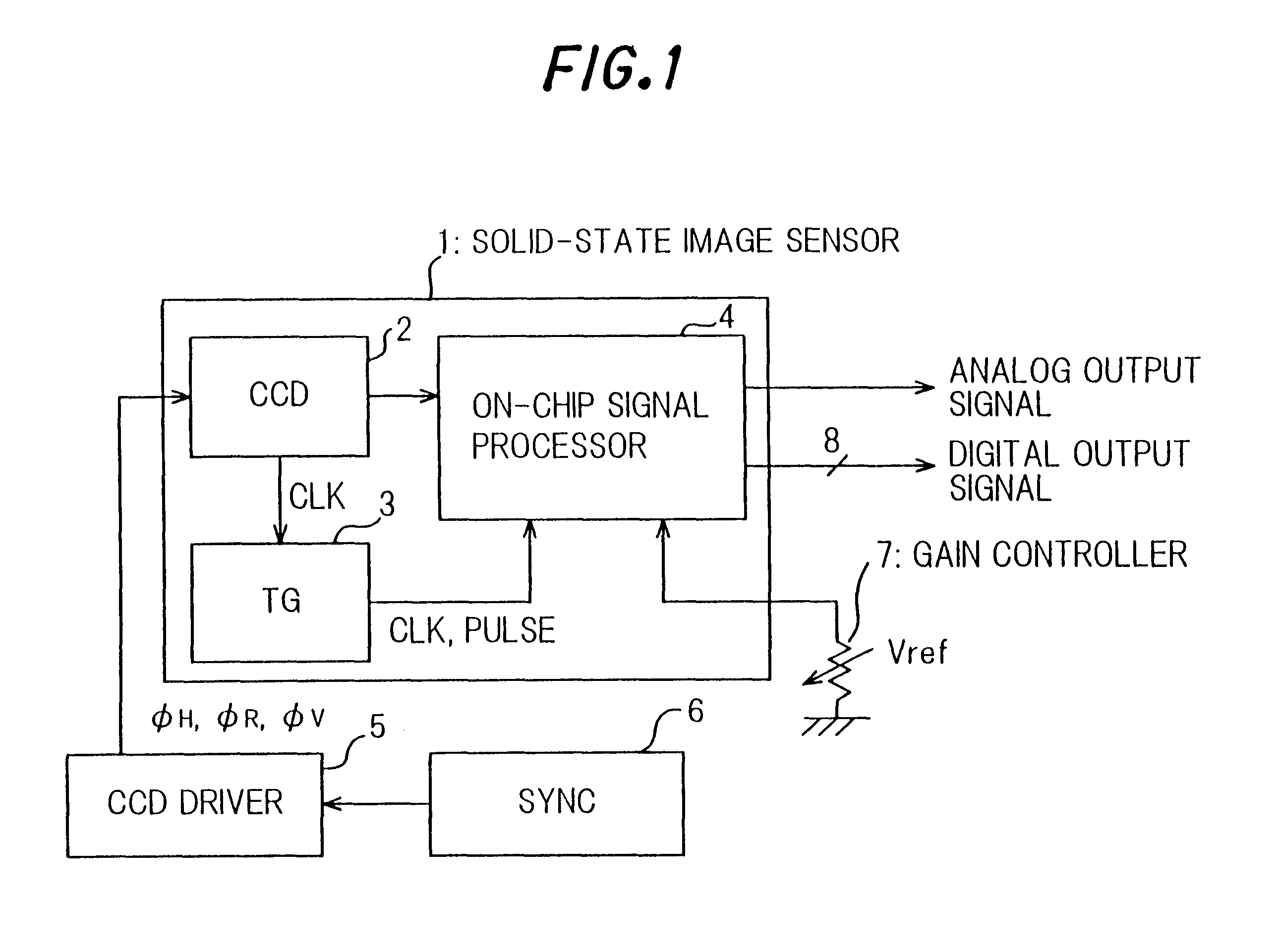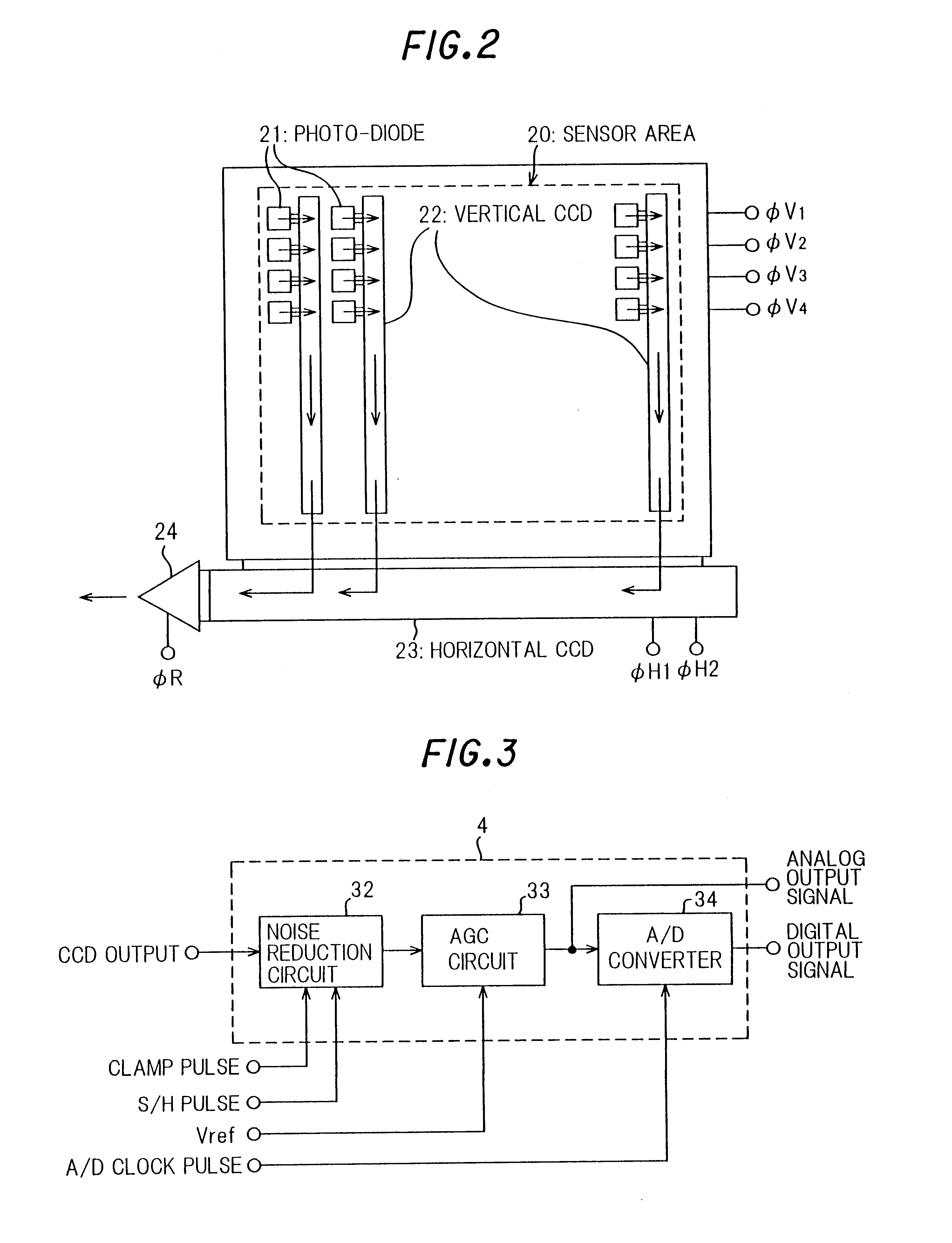Solid-state camera including a charge coupled device
a solid-state camera and charge-coupled technology, which is applied in the direction of color television details, television systems, radio control devices, etc., can solve the problems of easy noise performance, limited equipment miniaturization effect, and easy mingling of noise in the output signal of the ccd, so as to improve noise performance and uniformity of circuit elements, the effect of reducing the number of circuit elements
- Summary
- Abstract
- Description
- Claims
- Application Information
AI Technical Summary
Benefits of technology
Problems solved by technology
Method used
Image
Examples
Embodiment Construction
[0047]Now, embodiments of the present invention will be described in connection with the drawings.
[0048]FIG. 1 is a block diagram illustrating a configuration of an embodiment of the invention.
[0049]Referring to FIG. 1, a solid-state image sensor 1 according to the embodiment is configured on a semiconductor chip and comprises a CCD 2, a timing pulse generator (hereafter abbreviated as TG) 3 and an on-chip signal processor 4 including a noise reduction circuit, an auto gain control circuit (AGC) and an A / D converter.
[0050]Outside the solid-state image sensor 1, a CCD driver 5, a synchronous signal generator (hereafter abbreviated as SYNC) 6, and a gain controller 7 are provided.
[0051]CCD driving pulses (φV, φH and φR) are generated by the SYNC 6 and supplied to the CCD driver 5 to be voltage-amplified for driving the CCD 2 on the solid-state image sensor 1. Output signal of the CCD 2 is transferred to the on-chip signal processor 4, whereby processings of noise reduction, AGC and A / ...
PUM
 Login to View More
Login to View More Abstract
Description
Claims
Application Information
 Login to View More
Login to View More - R&D
- Intellectual Property
- Life Sciences
- Materials
- Tech Scout
- Unparalleled Data Quality
- Higher Quality Content
- 60% Fewer Hallucinations
Browse by: Latest US Patents, China's latest patents, Technical Efficacy Thesaurus, Application Domain, Technology Topic, Popular Technical Reports.
© 2025 PatSnap. All rights reserved.Legal|Privacy policy|Modern Slavery Act Transparency Statement|Sitemap|About US| Contact US: help@patsnap.com



